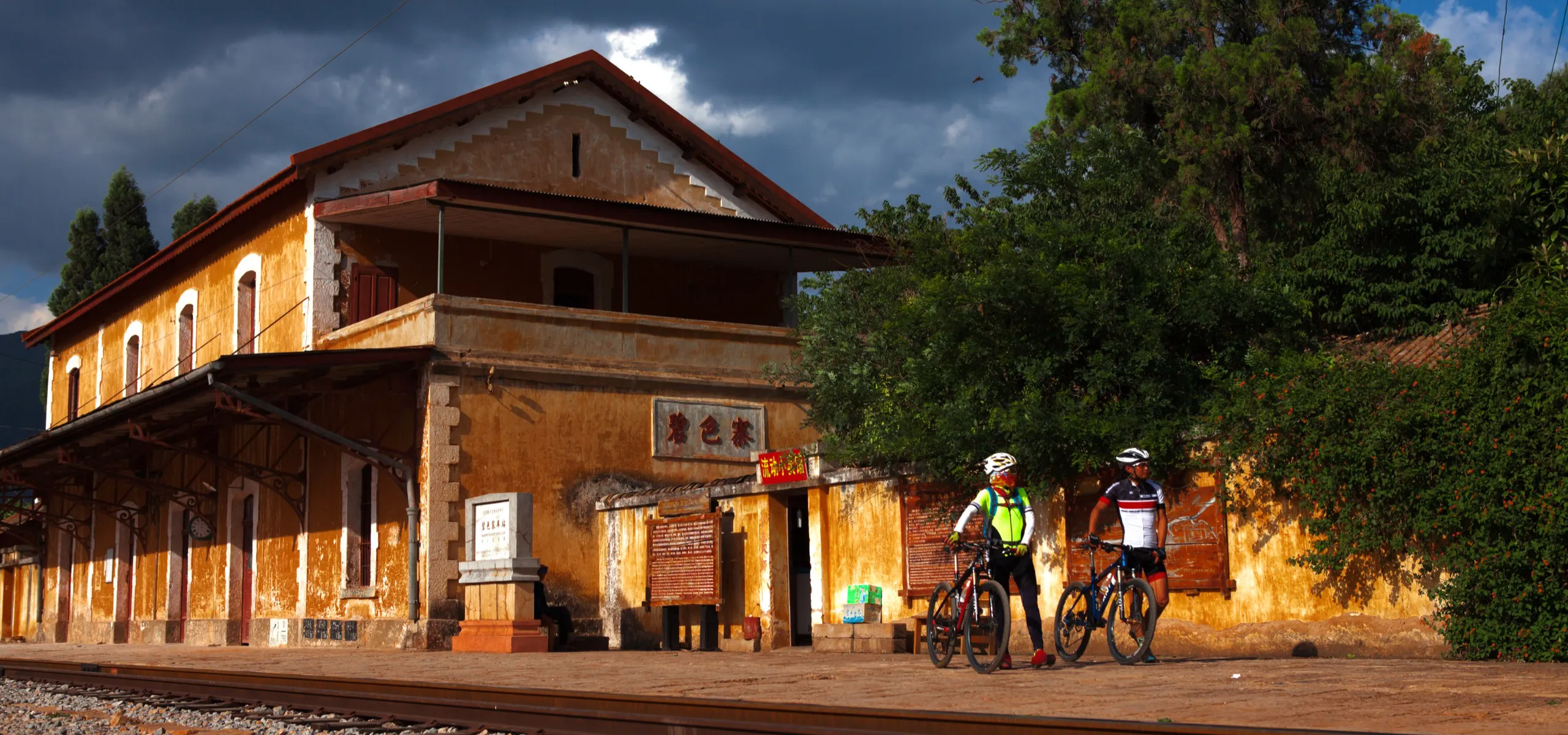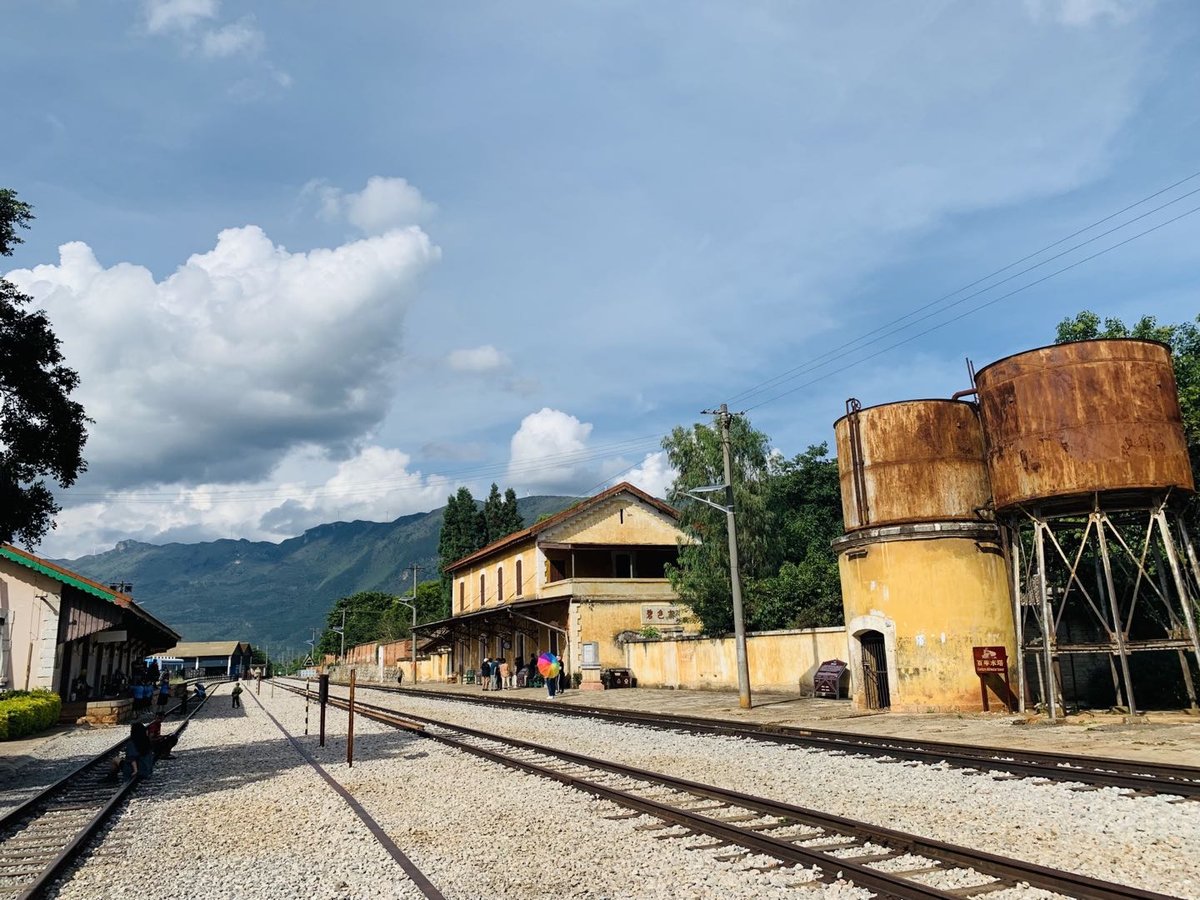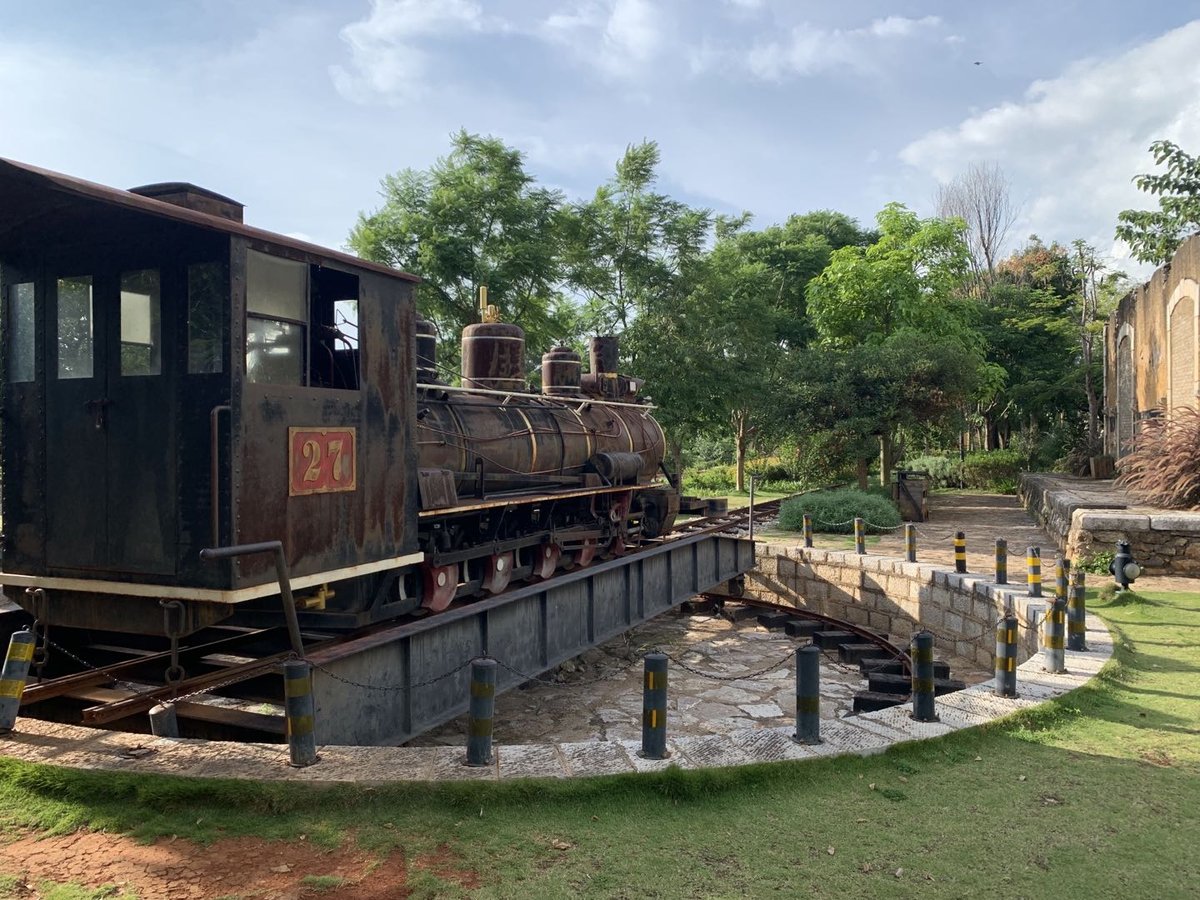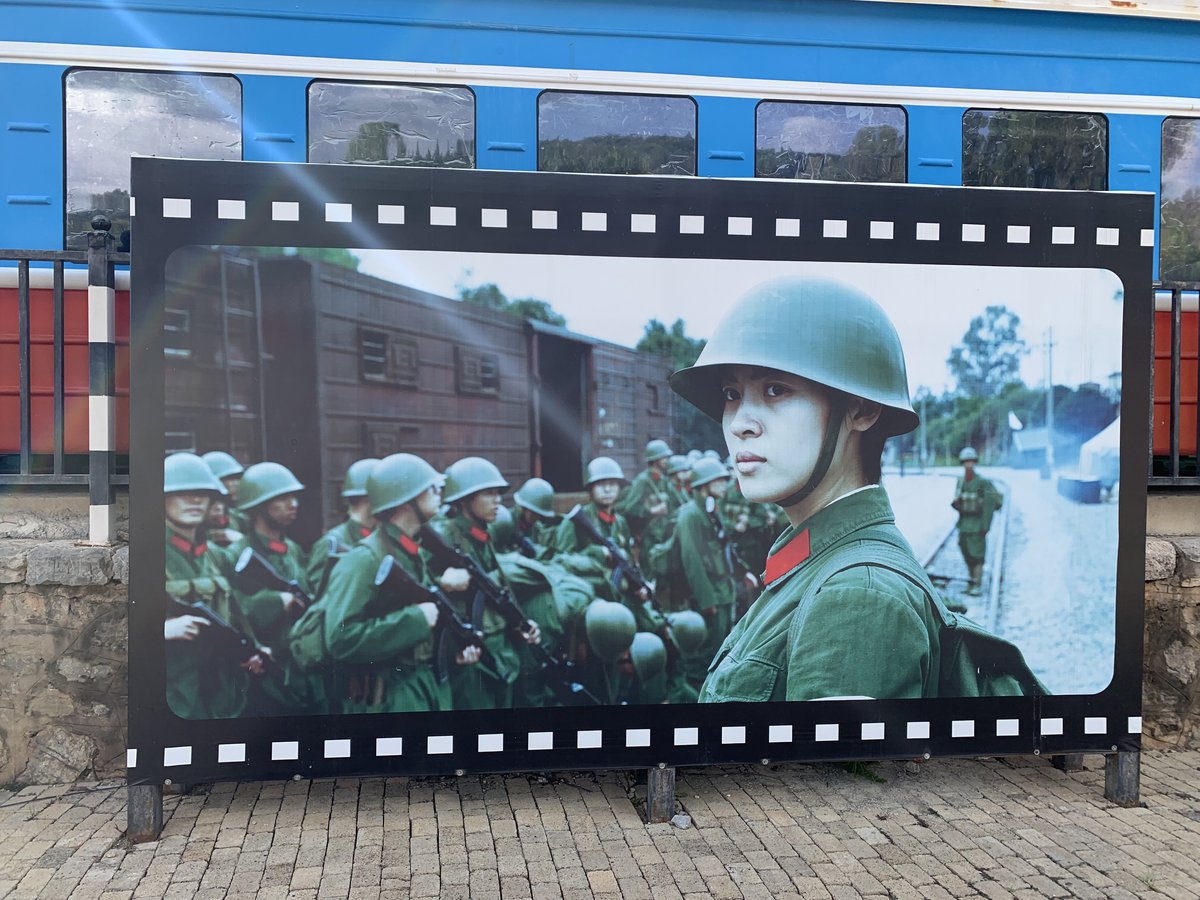Yunnan's French colonial connections lives on in the old train station at Bisezhai
Not far outside the bustling city of Mengzi, Yunnan province, famous as the home of “crossing-the-bridge rice noodles (过桥米线),” the small town of Caoba (草坝) nestles amid the lush green hills. The endless pomegranate groves, tropical flowers, and rice fields hide an array of curiously European mustard-yellow buildings, grass-green doors, and steel tracks sprawled on the ground like spiderwebs.
These are the remnants of Bisezhai Train Station (碧色寨火车站) , one of the oldest in China, and a product of French colonialism in Vietnam and southwest China in the 1800s. The old station has been here for over a century, and though it is now a site for tourists, it was once a vital stop on the Vietnam-Yunnan Railway that brought trade from European countries and their colonies all the way to China.
After the Sino-French War ended in 1885, China agreed to remove its forces from Tonkin (present day northern Vietnam) and France supplanted Chinese control there—yet another sign that the Qing empire was in terminal decline at that time. The southwestern province of Yunnan became a crucial part of France’s ambitions in the region. They hoped to open up a route for European goods from Indochina to flow into southwest China, and to access Yunnan’s rich resources like rubber, tin, and copper. Later in the 1880s, the weak Qing government reluctantly granted France the right to establish trading posts from Longzhou, Guangxi, to Mengzi.
After constructing numerous trading posts around the southwestern edge of China, France gained the right to build the Vietnam-Yunnan Railway in the aftermath of China's defeat to the Japanese in 1895, and was granted a charter to build and operate the railway for 80 years. Construction began in 1903 and the railway would end up being one of France’s most ambitious-colonial projects, costing a hefty 95 million francs (412 million USD today).
Initial routes that were supposed to pass through the cities of Hekou and Jianshui were scrapped after opposition from local officials who opposed the railway development. Eventually, French engineers settled on Bisezhai as the center point of the line for its location close to the mines that tapped into Yunnan's natural resources.
Finally, in 1910, with 117 scheduled stops and 855 kilometers of track (around half of them in Yunnan), locals began to hear the rumbling of trains on the Vietnam-Yunnan Railway. But this momentous project had not come without a cost: Over 12,000 of the 65,000 Vietnamese and Chinese laborers died piecing the track together over the mountainous route. The workers suffered in the tropical heat, and were also at risk of contracting malaria or cholera. The railway involved construction of 425 bridges and 155 tunnels, including the Herringbone Bridge (人字桥) in Pingbian county which is said to have taken 12 lives per meter of track laid.
Bisezhai was a key stop on the railroad. It was the largest station upon completion of the railway, and was where trains operating on the local Bishi Railway (which used the narrowest gauge in China) could transfer their contents to the wider-gauged Yunnan-Vietnam railway. This was done via Bisezhai's turntable, which required four people to push. Bisezhai was also a refueling location as it housed three large water towers, essential to the steam locomotives that needed water and coal to function. Today, one of the century-old water towers still stands next to the main entrance of the station.
The railway brought business from the coastal city of Haiphong in Vietnam all the way to Yunnan’s capital of Kunming, a journey that could take up to four weeks by boat. It also served as an important supply line to the Chinese war effort during World War II, with over 1.3 million tons of cargo flowing across the tracks in three years.
In peacetime, numerous foreign businesses operated in the area near Bisezhai, and they shuttled cargo in and out of China day and night. At its busiest, over 80 trains a day could be seen steamrolling through with over 3,000 porters handling their cargo. While many of the routes have been modernized or rebuilt, some cargo still travels along parts of the old Yunnan-Vietnam railway today.
But the sound of trains no longer interrupts the peace at Bisezhai—the last passenger trains on the old Vietnam-Yunnan Railway stopped running in 2005. Today, strolling through Bisezhai is like stepping into a picturesque French hamlet. The “Little Paris of the East” (as one of the plaques on the station dubs Bisezhai) is still evident in the station’s louvered windows, earth-toned walls with imported Paul Garnier clocks on the walls, and stacked red tiles on the ground. Many of the train station’s iconic buildings still stand, such as the customs building, water tower, post office, canteen, and engineering offices. The former buildings and signs of many businesses and offices are also preserved, so tourists can observe the diversity of foreign trade that once flowed through Bisezhai.
A Kunming property developer has turned Bisezhai's old train station into a tourist site over the last few years. Freshly-paved parking lots, 20 RMB per-ride sightseeing vehicles transferring tourists around, and newly constructed trinket stalls now line the street to the main entrance, with hawkers eager to squeeze any bit of change they can out of visitors.
But even in retirement, Bisezhai has left its mark on contemporary culture. Multiple movies and TV dramas have used the distinct colonial architecture to set important scenes. In Feng Xiaogang’s 2017 film Youth (《芳华》), for example, about a group of college friends who enlist to serve in the Sino-Vietnamese War of 1979, many of the battle scenes take place against the backdrop of the colorful station at Bisezhai.
Now, many young tourists can be seen scampering around wearing rented moss-green attire of the People's Liberation Army, posing for photos in the same spots as their movie idols. A newly constructed warehouse filled with “vintage” train carts acts as a restaurant for the hungry tourists, while a Youth movie experience center drives this particular marketing ploy home.
Bisezhai is just a tourist site now, but it has played its part in Yunnan's history. It connected the province to international trading networks, and proved vital in war time. While the steam trains may not chug across the tracks at Bisezhai any more, its legacy lives on in its little corner of Yunnan.


















